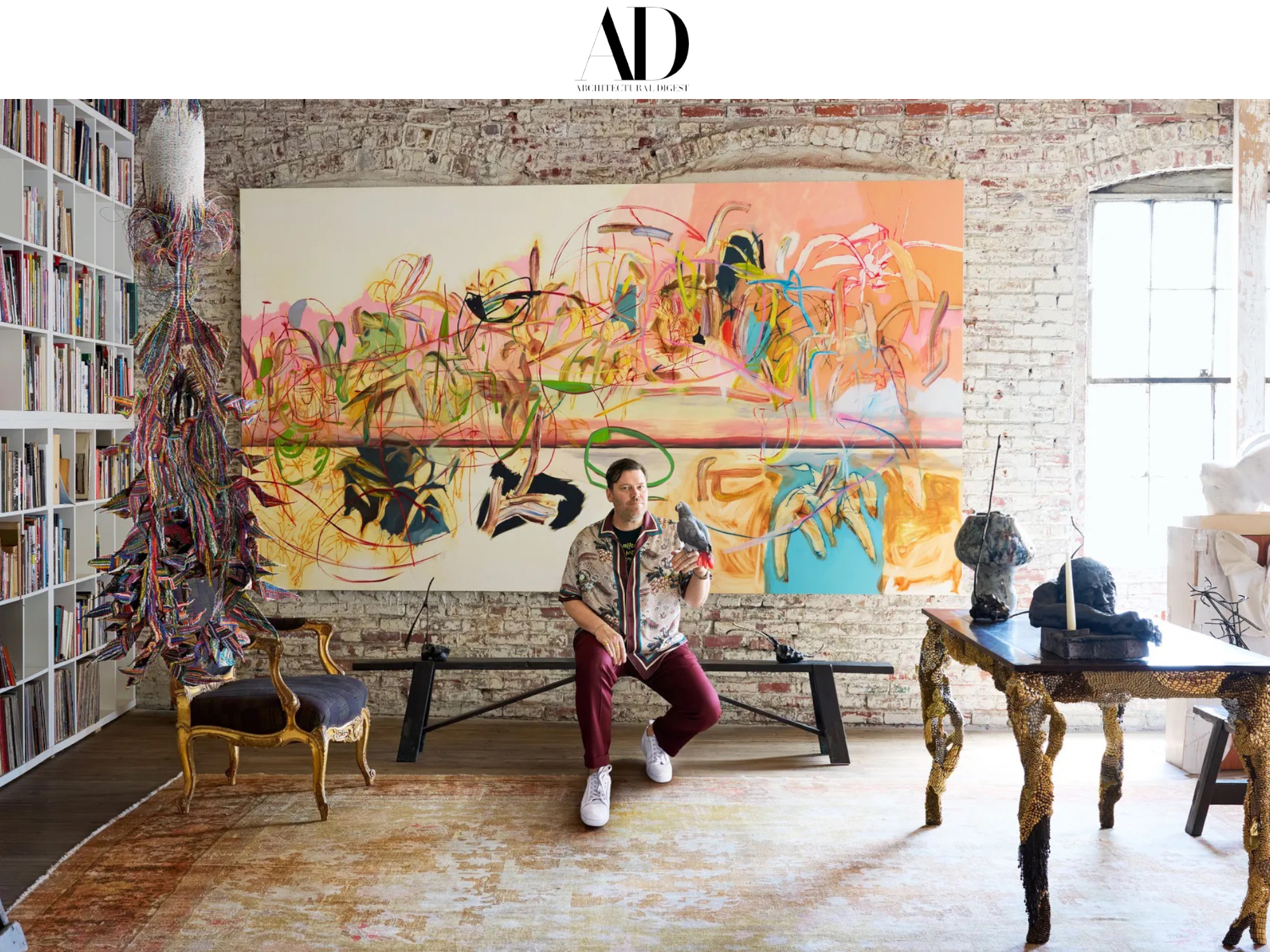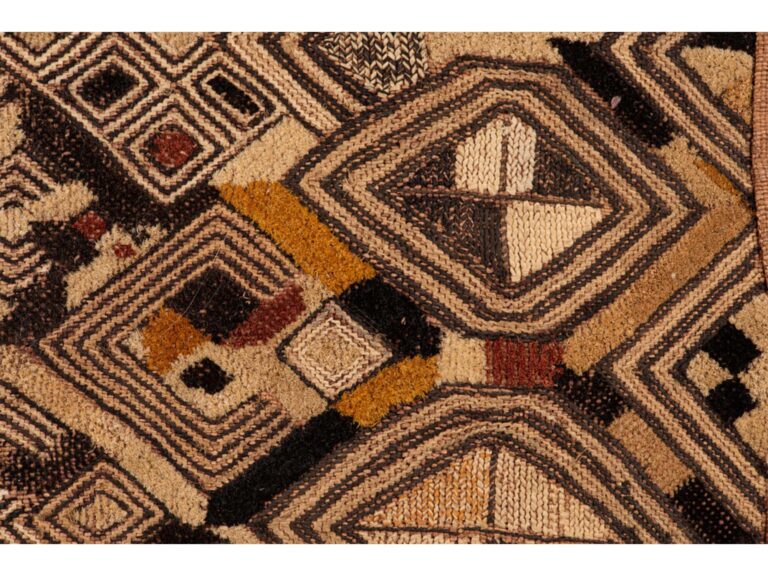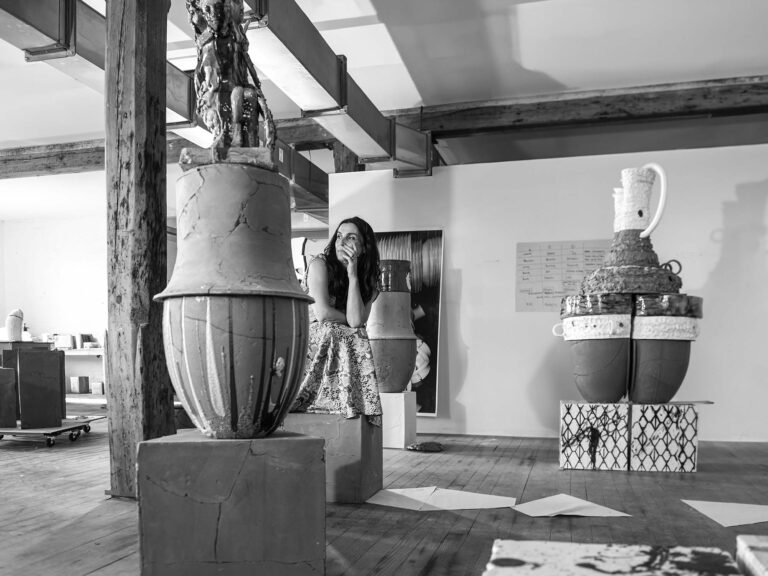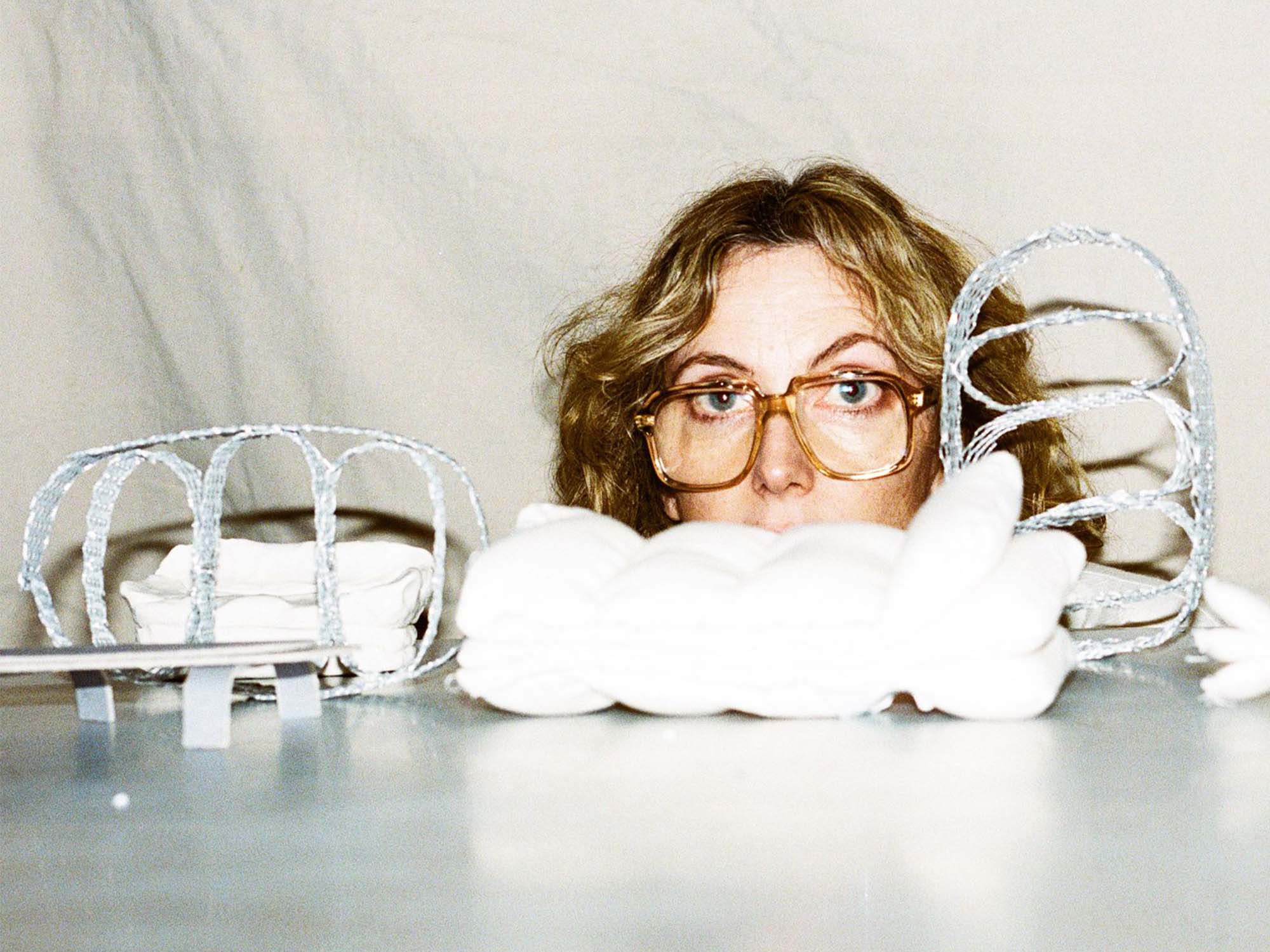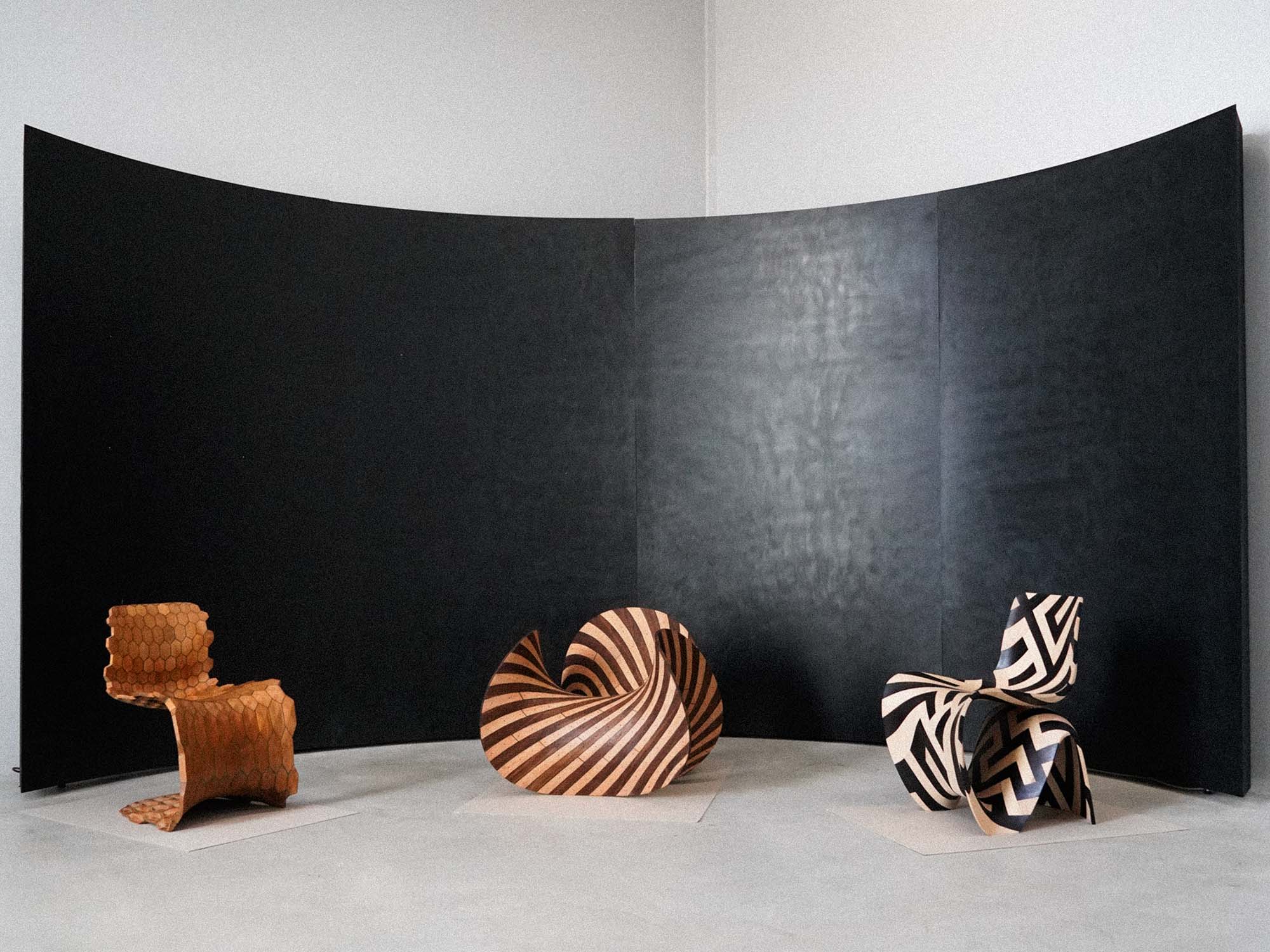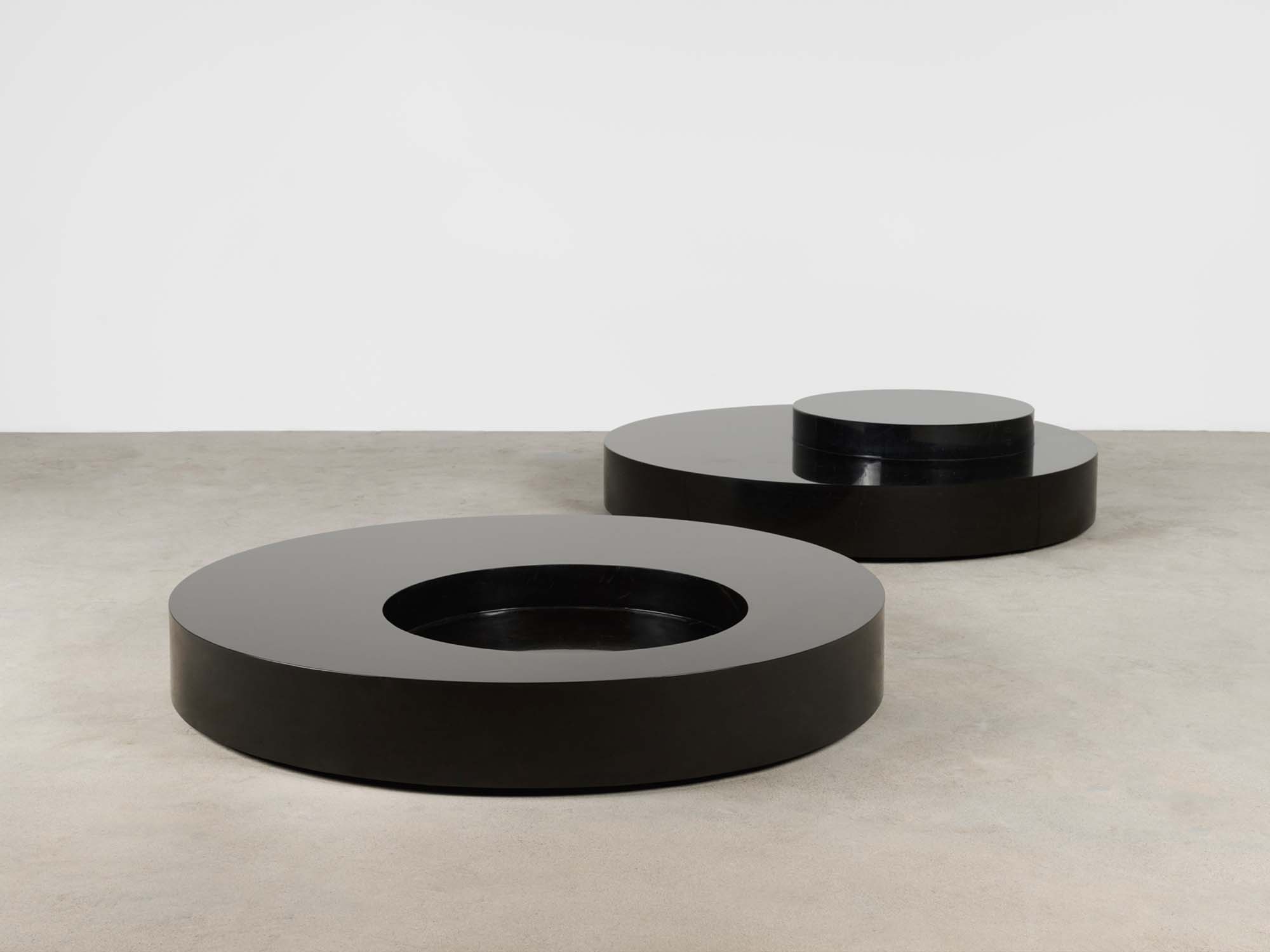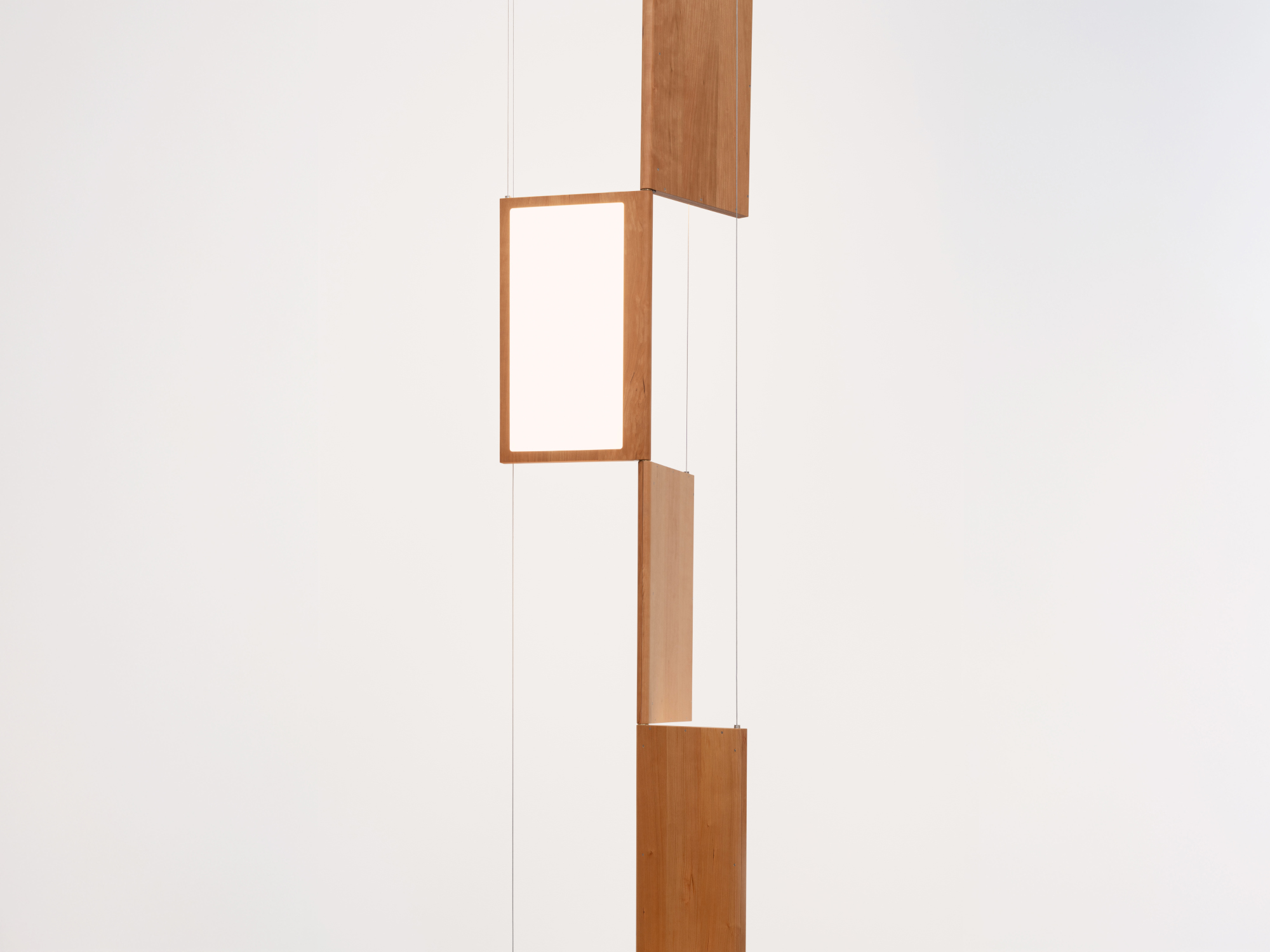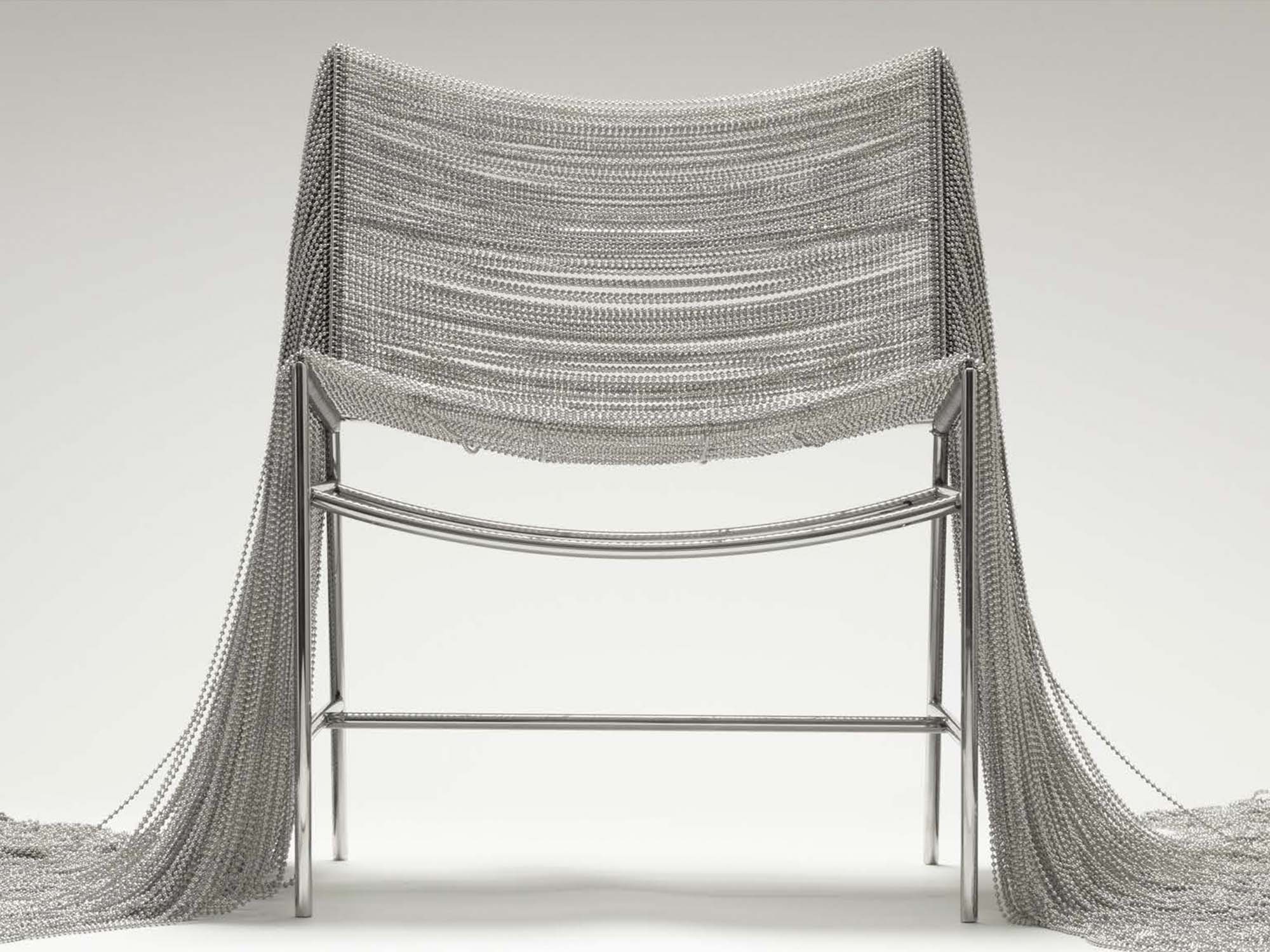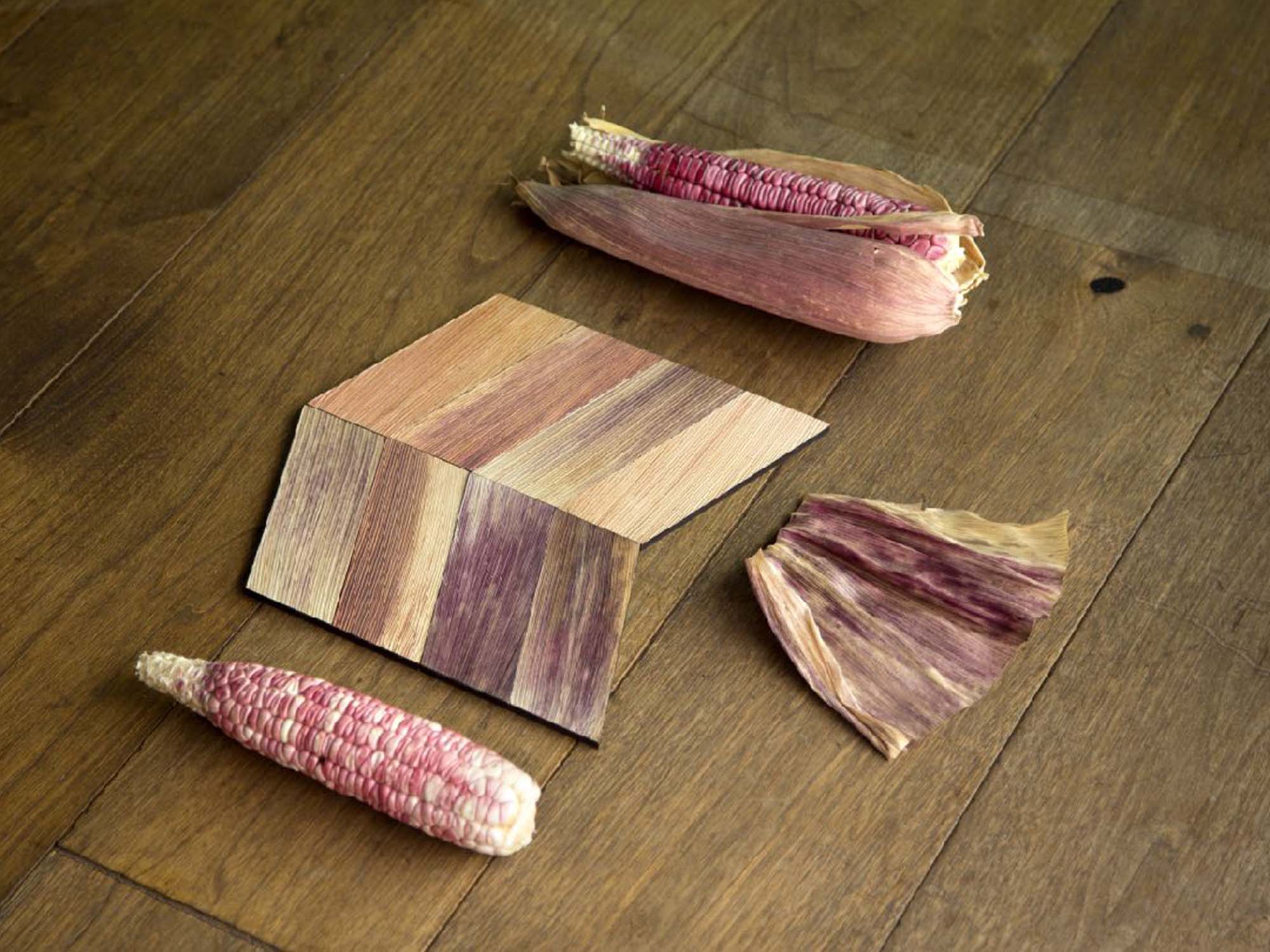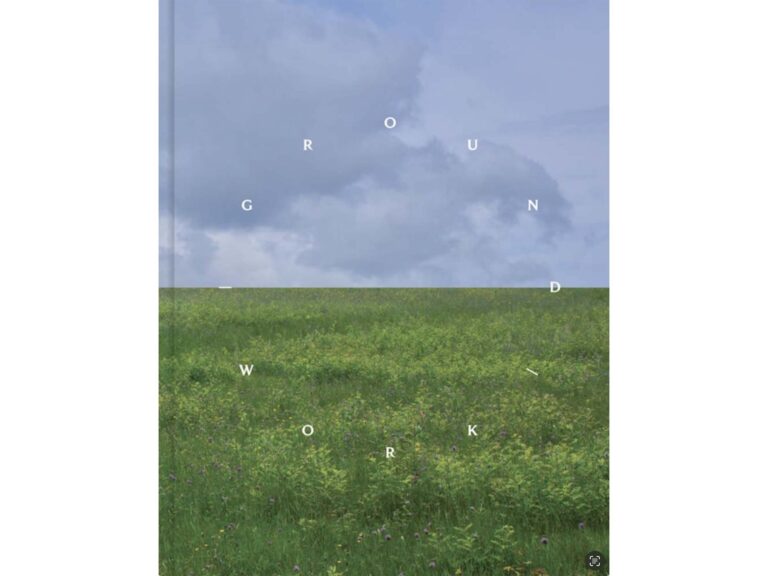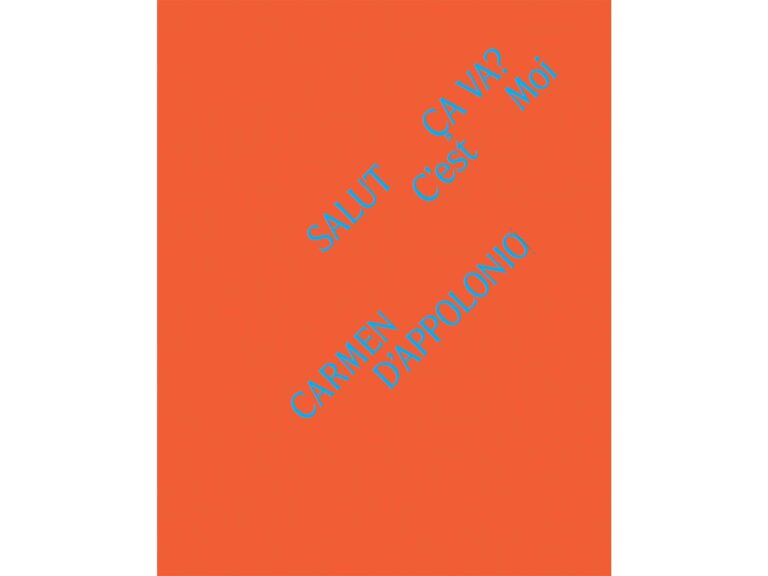FOR ARTIST ELLIOT HUNDLEY, WORK AND LIFE COALESCE IN A FORMER FACTORY IN DOWNTOWN LOS ANGELES
By Mayer Rus
As a child growing up in Greensboro, North Carolina, Elliott Hundley formed his conception of how artists live based on cinematic archetypes of painters and sculptors roughing it in bohemian splendor in converted industrial spaces. “I was obsessed with the idea of New York artists in these huge lofts, like Nick Nolte in New York Stories. That was my fantasy of how I wanted to live,” Hundley recalls. The romantic image proved indelible. For the past decade, Hundley has made his home and studio in a former engine factory built in 1907 in the Chinatown neighborhood of downtown Los Angeles.
Sprawling over nearly 18,000 square feet on two levels, the building had functioned as an import warehouse and a sewing shop at various points over the past century. Today, it is a place where art and design slip the bonds of their traditional ghettos to form a kaleidoscopic wonderland of beauty and inspiration—a live-work space where living and working are truly two sides of the same coin.
“I don’t see a difference between functional art and fine art,” says Hundley, a multidisciplinary artist whose practice encompasses painting, drawing, sculpture, photography, and, more recently, forays into furniture design. “Function is just another layer of meaning,” he continues. “Functionality is a way to create interaction, and I’m always interested in interaction and ways of integrating aesthetic experiences into our daily lives.”
For Hundley, the concept of interaction extends to other artists whose work he both collects and exhibits. His loft operates like a latter-day salon, frequently abuzz with convivial gatherings of the creative class, presided over by his three dogs—Sippy, Spicoli, and Sweet Pea Oui—along with Echo, his African grey parrot. Paintings and drawings are displayed in a gallery adjacent to Hundley’s studio on the building’s lower level, while an expansive, light-filled area off the living room on the upper floor hosts a rotating selection of sculpture.
Beyond the two dedicated exhibition spaces, the entire building is a kind of Kunstkammer writ large, where the crosscurrents of Hundley’s practice—montage and assemblage, polyphony and cacophony—animate the rooms and everything in them. “I don’t think about the way things look together at all. I think about the beauty of the individual pieces, and then I just play with them,” Hundley says of his deftly imbricated, uber-eclectic decor. “I love repurposing old things, giving them new life and meaning. I don’t mind broken or chipped antiques. It isn’t about pedigree and perfection, but there is a certain kind of connoisseurship at work.”
Hundley’s democratic tastes and aesthetics of muchness come to life in decorative vignettes that would feel hopelessly forced and jarring in lesser hands. Midcentury biomorphic sofas and chairs mingle amicably with gilded fauteuils and Victoriana. Windsor chairs cozy up to antique Chinese tables. In the small garden at the rear of the building, the artist paired a giant commercial bird sculpture with a burnt Organic Baroque Chair by Tony Duquette for Baker Furniture, salvaged from the fire that destroyed the legendary design wizard’s Malibu ranch, Sortilegium, in 1993. The through line for these madcap compositions is art—lots and lots of art, including a generous sampling of Hundley’s own paintings and sculptures mixed with pieces by his artist friends. “I’m constantly rearranging everything. I treat the whole space like a collage,” he maintains.
The many faces of Hundley’s career are currently on glorious display in a two-pronged exhibition at the Santa Barbara Museum of Art. The first, “Proscenium,” a mid-career survey on view through August 31, brings together more than 50 artworks created between 2000 and 2025. (The title of the survey nods to Hundley’s engagement with theater as an essential inspiration for his practice.) For the second part of the show, the artist has reinstalled pieces from the museum’s collection of Greco-Roman antiquities in a genre-bending presentation that celebrates Hundley’s long-standing fascination with classical mythology. “By Achilles’ Tomb,” his fantasia on Greco-Roman themes and iconography, remains on view in SBMA’s Ludington Court through February 22, 2026.
Hundley’s daring installation echoes the spirit of his domestic experiments—reimagining, recontextualizing, and remixing the familiar to surface unexpected emotional and intellectual resonance. “To me, it’s all connected,” he insists. “Art, life, past, present, memory, mythology. I’m interested in everything around me, including the chairs and dishes.”
